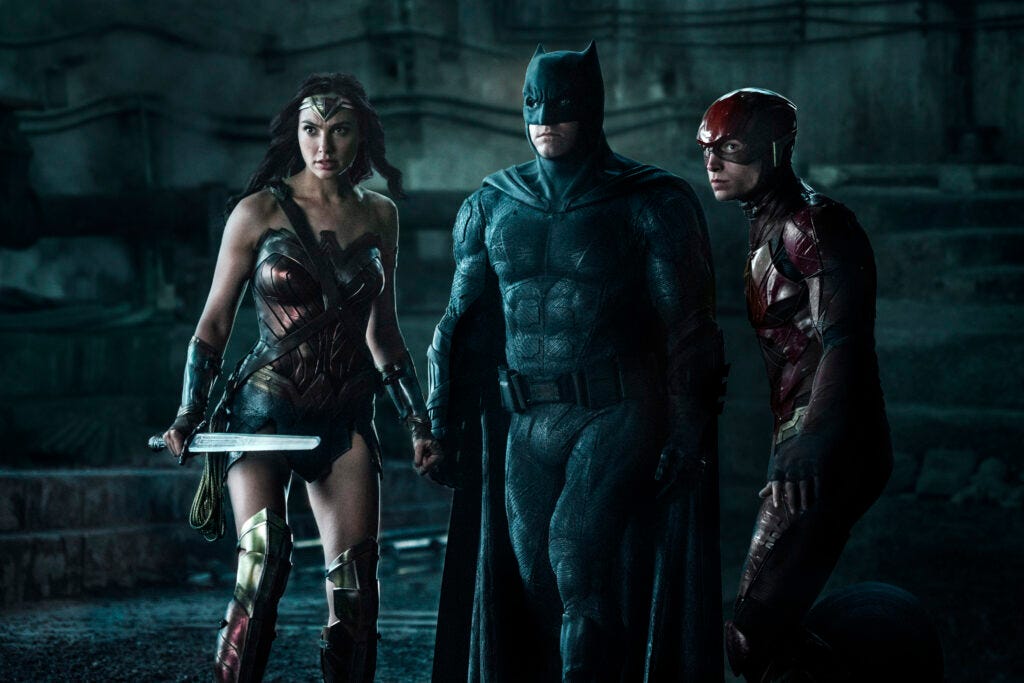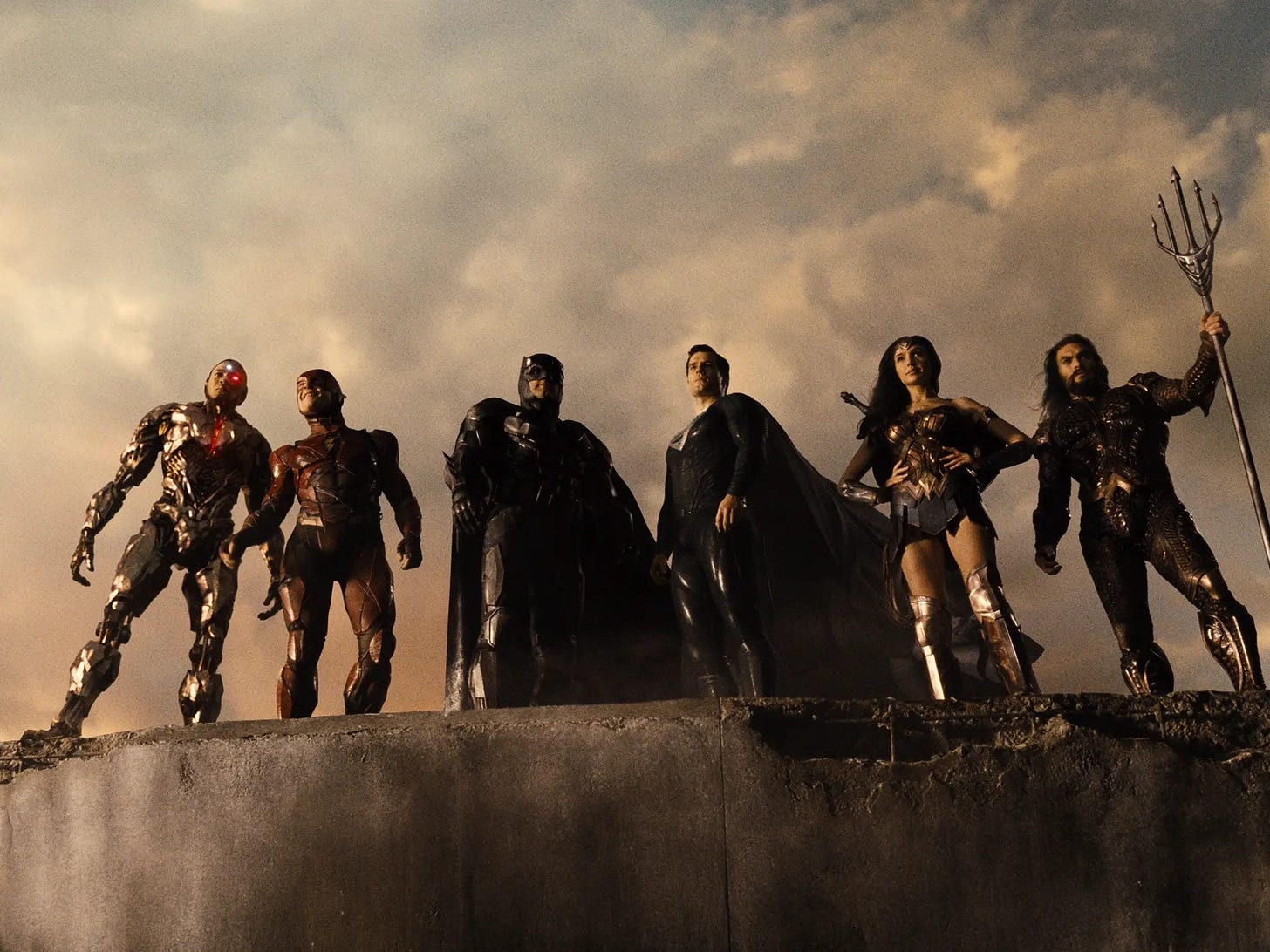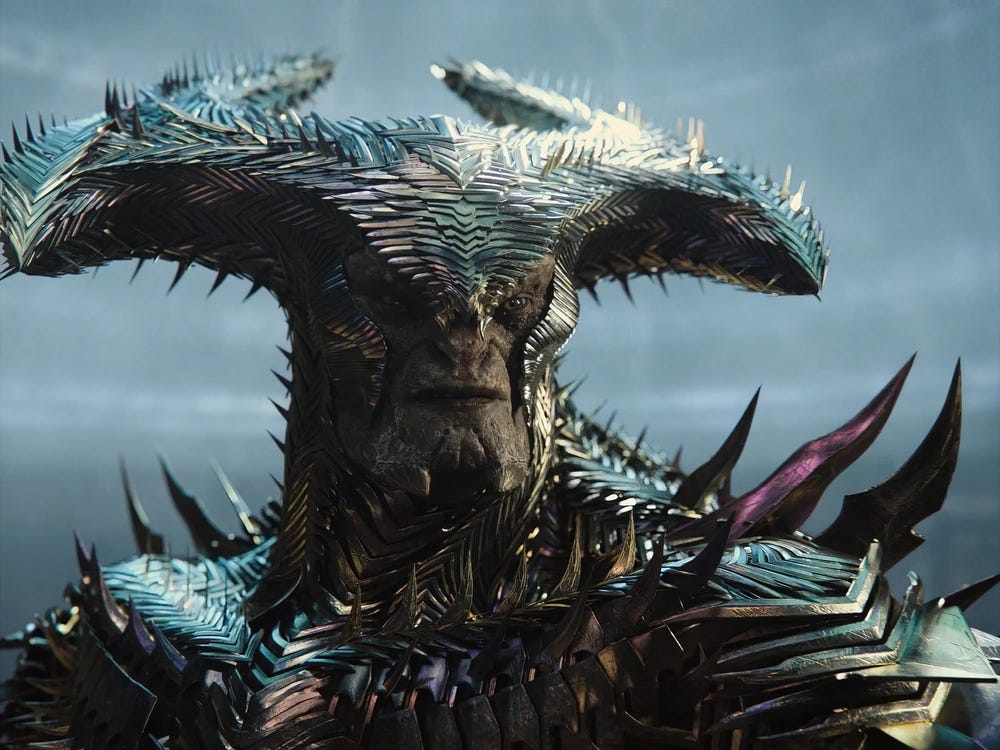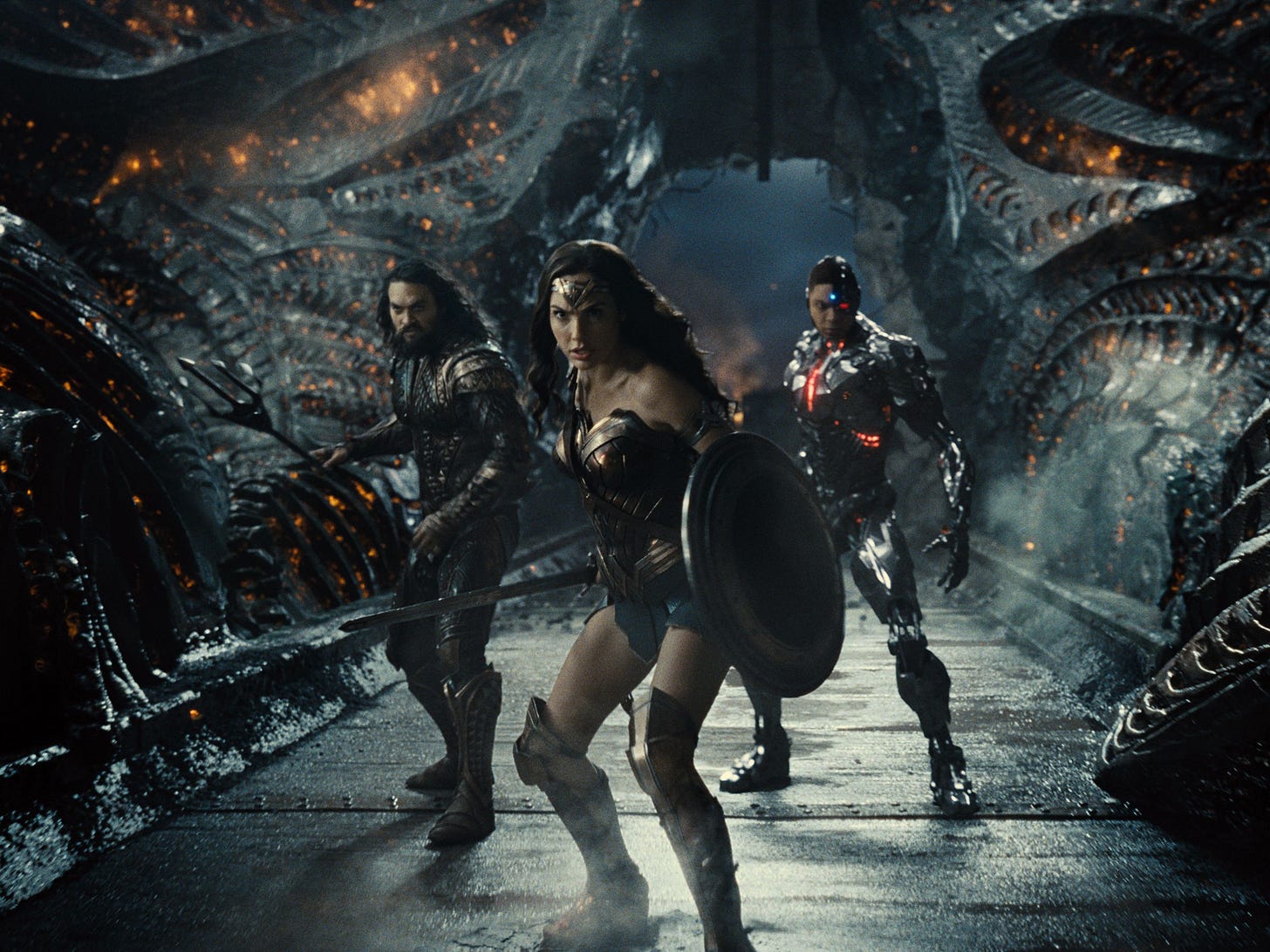Review: 'Zack Snyder's Justice League
A look back at the superhero universe that could have been
It feels like a different era now, but back in 2017, moviegoers finally saw a version of Justice League in theaters. Fans of Superman (Henry Cavill), Batman (Ben Affleck), Wonder Woman (Gal Gadot), The Flash (Ezra Miller), Cyborg (Ray Fisher), and Aquaman (Jason Momoa) had been waiting for this day, and the debates about the previous films in the DC Extended Universe were many, and often loud.
Many, however, left the theaters with mixed feelings. The film was called rushed, messy, and tonally incoherent by fans and critics alike, with too little time spent on the very characters it was meant to be about.
The production of Justice League was beset by drama and tragedy. Director Zack Snyder, who had already helmed Man of Steel and Batman v Superman: Dawn of Justice, intended to bring his vision to a trilogy of Justice League films. But after the tragic death of his daughter in 2017, the director left the project to be with his family. Joss Whedon was brought in to complete the film.
Whedon, known for directing Marvel’s The Avengers and Avengers: Age of Ultron, was tasked with finishing the movie. He immediately began to cut apart and redo most of what Zack Snyder had created, pushing for a more kid-friendly, cliché-ridden version—which quickly earned the unfortunate nickname "Josstice League". It was also rumored that Whedon would often loudly criticize Snyder and his work on the film—and be a pain to work with for both cast and crew.
Talk about kicking a man when he is down.
It feels like karma, then, that the version Whedon put on theater screens in 2017 was eviscerated by most critics and fans. "Josstice League" was a string of stale clichés, misplaced humor, cringey one-liners, and incoherent storytelling. Worse, the film offered almost no insight into the backgrounds, drives, and motivations of its heroes and villains. In a film series of varied quality, Whedon’s version of Justice League stands as the weakest link.
Several cast and crew from other DC adaptations, like Jason Momoa (Aquaman) and Patty Jenkins (Wonder Woman), defended Zack Snyder’s original vision. Both insisted that Whedon’s version should not be considered canon. At least one Hollywood executive has gone on record calling Whedon’s version a "piece of shit." Others involved in the franchise expressed similar opinions, showing relief when it became clear that Snyder’s version would finally be released.
Zack Snyder never watched Joss Whedon’s cut. Instead, he kept working on his own version, hoping to one day release it to the fans. And when those same fans, many disappointed by what had come before, discovered hints of an existing "Snyder Cut", a massive show of support and an online petition to have it released followed—a powerful moment in fan-driven campaigns.
This was to be Zack Snyder’s unfiltered vision, unhindered by the limitations of the cinema format. Here, he could explore the heroes’ backstories, the mythos of the superhero world, and their motivations. He could spend as much time as he needed to tell the story, without recuts or studio interference.

Fast forward to 2021. With the world struggling through a major pandemic, and cinemas on a precipice, the stage was perfectly set for a four-hour director’s cut to find its audience at home.
The result? Amazing. Zack Snyder’s Justice League is still dark and brooding, so if that’s what you disliked about the 2017 version, this new cut might not be your cup of tea. But gone are Joss Whedon’s cringey one-liners and misplaced humor. In fact, Snyder made a point of not using a single frame that Whedon shot. And the film is so much better for it. It is a visual masterpiece. The weakest film in the old DC franchise became its strongest.
Despite following the same general plot as Whedon’s version, Zack Snyder’s Justice League is hard to recognize as the same film. Presented in 4:3 aspect ratio, it’s divided into several parts, each with its own title, breaking up the four-hour-plus runtime. The structure feels like a miniseries or even a comic book with multiple issues. There is even a black-and-white version for that extra grit and broodiness!
The plot, for those who need a reminder, is straightforward: Guilt-ridden after the death of Superman in the previous film, Batman, aka Bruce Wayne, senses a greater danger is coming. He begins gathering a group of superpowered people, or "metahumans", to be ready when the threat rises.
And rise it does. With the arrival of the intergalactic warlord Steppenwolf (Ciarán Hinds), the Earth is again in danger. The villain is after the "Mother Boxes"—three powerful items hidden on Earth by the gods thousands of years ago—which have the power to destroy the world. With Earth’s mightiest hero, Superman, out of the picture, the way is clear for Steppenwolf to begin his invasion. This, of course, leads to one mighty dustup between the superheroes and Steppenwolf’s army of demonic insect men!
When the action starts, there is no doubt who is in the director’s chair. Zack Snyder knows how to create intense, epic action scenes. More importantly, he knows when not to use them. This is a film packed with explosions, spaceships, aliens, and some insanely over-the-top fights.
But Snyder counters this with plenty of calmer, character-driven scenes, often with very little dialogue. It lends a feeling of something more real to this story about superheroes and interdimensional aliens. Yes, it is dark. It is gritty. It is neither funny nor witty. But the heroes we meet here are shown from a more vulnerable and believable side than the constant barrage of one-liners and standard "Oh no! The bad guy killed Uncle Bob!" tropes from other films in the genre. The cast gets to spread their wings, and in the four-hour runtime, they have the space they need to invite us into the minds of their characters.
Snyder’s version of Justice League is that rare thing: a superhero movie for adults. While watching it, I was often reminded of the director’s adaptation of Watchmen. Compared to other films in the genre, the violence is more brutal, and the themes and language are darker, more unfiltered. The heroes drop F-bombs, and blood flows freely in the action scenes. The Marvel movies feel like lighthearted action comedies in comparison. This film has the tone of the epics, the myths—a superhero genre’s answer to The Odyssey and The Iliad.
I love superhero movies, but lately, something has felt off with the genre; these days, the truly good superhero movie is the exception, not the rule. When I was first asked to review Zack Snyder’s Justice League back in 2021, I decided not to watch any of the teasers or trailers. My only reference for comparison would be the 2017 "Josstice League". And I am glad for it. I didn’t review the "Josstice League" when it came out, but if I had, I would have given it a hard time and a low rating. This time around, it is a celebration of the DC fandom in all its dark and brooding grittiness. Zack Snyder’s Justice League is one filmmaker’s unfiltered vision and a gift to the fans.
Looking back at the path of Zack Snyder’s take on the DC Universe, my heart sinks. It’s a real shame that this story was cut short. But Hollywood is as Hollywood does, and for reasons that are hard to fathom, this entire cinematic universe was abandoned. From what I consider a superhero genre masterpiece, Zack Snyder himself would eventually move on to create his ill-fated and hilariously inept science fiction Rebel Moon universe for Netflix.
And seeing how James Gunn—the franchise’s new head honcho—now seems to be returning to a much lighter, more kid-friendly, Golden Age of Comics version of Superman makes me uneasy about whether the DC Universe will ever be the same on screen.






In interviews at the time of release, Snyder spoke of how is vision for an eventual Justice League 3 would draw some inspiration from the Last Alliance, as all the races and heroes of Earth came together to resist Darkseid one last time. Personally, I wouldn't mind seeing that...and since that's not going to happen anymore, I'd be open to Snyder ACTUALLY tackling the Last Alliance and directing a few episodes of Rings of Power Season 5. This story fits his epic and mythological sensibilities perfectly; he's a brilliant visual storyteller; and pairing him up with JD Payne and Patrick McCay would save him from his biggest weakness, his own indifferent skills as a writer (which were on vivid display in Rebel Moon).